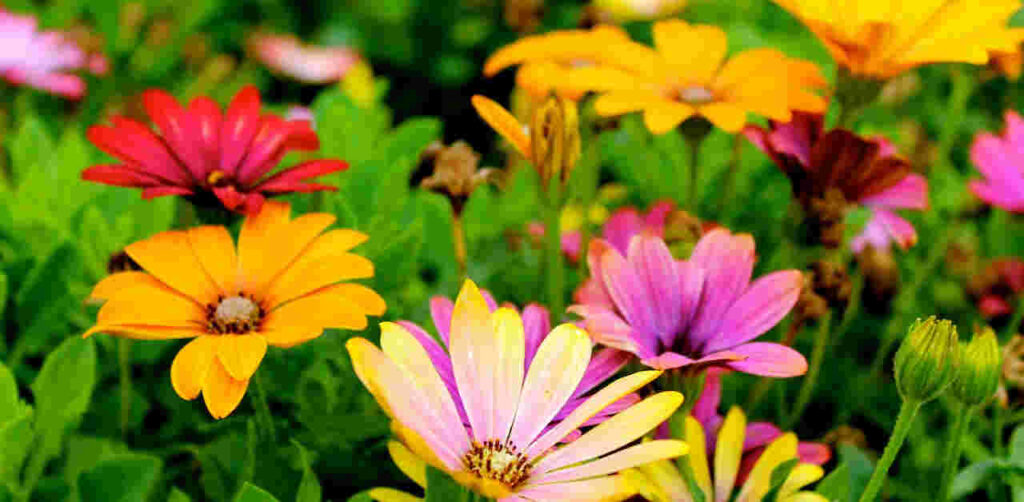Flower Garden Design and Care Tips
Published by: Almanac
Time to replace that boring patch of lawn with a bright and beautiful flower garden! Let’s talk about how to start your first flower garden from scratch. We’re going to start small with some expert flower design tips to consider—plus advice for choosing, planting, and growing your flowers.
We all dream of a lush, lovely flower bed full of colorful blooms all season long. What we end up with is usually a different story. Does your color run out when the heat hits? Do the plants clash and give the impression of clown pants? Do the tall plants crowd out the short ones? Is it all looking shabby by late summer?
Let’s review how to start your flower garden from scratch to understand the important considerations along the way.
Picking the Perfect Location
Be sure to locate your flower garden where you can enjoy it every day. Take time to assess your site. Here’s a short list to go through:
How much sun does your garden get? Many people are surprised that they’ve made some wrong assumptions. Over a single typical day, write down the amount of sunlight your garden receives every hour from early in the morning to sunset. Is it full sun (6 hours or more), partial sun (3 to 6 hours), partial shade (about 3 hours), or full shade (less than 3 hours)? If you find your plant leaves burn or growth becomes leggy, those are hints that the plants are placed in the wrong location.
What is the soil like? You simply need healthy soil that’s not compacted and that drains well. A couple of clues: After it rains, the water shouldn’t pool in the garden area. Also, it shouldn’t be difficult to dig into the soil to amend it with organic matter such as compost to provide nutrients and improve soil structure. Learn how to garden in compacted clay soil.
Once you know what you are dealing with, you can select plants that will do well on your site. Think of your garden as a multi-layered community of plants. When you buy a plant, you’ll see that the tags will tell you how much sun exposure they need. Other things to consider about your gardening site include:
Does your hose reach that far? Having an accessible water source will be important, especially when the heat of mid-summer kicks in.
Also, consider what function—other than looking gorgeous—you’d like it to perform. Screening an ugly view? Adding privacy or a place to sit? Do you want to see it from inside the house? Make a welcoming front walkway. Surround a deck or patio? Will it be a border garden on the edge of the lawn or an island of color in the middle?
How much work do you want to do and how much time do you have to spend caring for your new garden? Be realistic. It is best to start small. You can always enlarge your garden over time.
Prep Work for Flower Garden
Before you start digging, make sure to check for buried utility lines by calling Dig-Safe at 811.
Lay out the location of your garden with a garden hose or rope. Make sure the curves aren’t too sharp so you can still mow around it easily. Once you get a shape you like, mark the outline with lime or powdered chalk. Use an edger or flat spade to cut along the edge.
There are many ways to attack your grass. You can dig it up by hand, till the grass in if it isn’t weedy, remove the sod completely, or smother it. Personally, I prefer smothering to digging. Using the lasagna method, cover the area with a thick layer of newspaper or cardboard, wet that down and cover it with several layers of any organic mulch materials you can find such as shredded leaves, coffee grounds, grass clippings, manure, compost, topsoil, rotten sawdust, and seed-free straw. It will take a while, but eventually, the grass will die off. You don’t have to wait though—you can dig planting holes directly through the mulch into the ground and start planting as soon as you like.
Avoid digging or handling soil when it’s wet in order to prevent compaction. If you squeeze the soil into a ball and it doesn’t crumble or fall apart, it’s too wet to plant.
